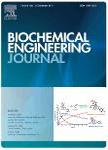版权所有:内蒙古大学图书馆 技术提供:维普资讯• 智图
内蒙古自治区呼和浩特市赛罕区大学西街235号 邮编: 010021

作者机构:Univ Palermo Dept Engn Viale Sci Ed 6 I-90128 Palermo Italy Consorzio Univ Caltanissetta Corso Vittorio Emuanuele 92 I-93100 Caltanissetta Italy Inst Natl Rech Sci Ctr Energie Mat & Telecommun 1650 Blvd Lionel Boulet Varennes PQ J3X 1S2 Canada Univ Palermo Abiel Srl Viale SciEd 16 I-90128 Palermo Italy Univ Palermo Dept Biol Chem & Pharmaceut Sci & Technol STEBICE Viale SciEd 16 I-90128 Palermo Italy
出 版 物:《BIOCHEMICAL ENGINEERING JOURNAL》 (Biochem. Eng. J.)
年 卷 期:2022年第178卷
核心收录:
学科分类:0817[工学-化学工程与技术] 08[工学] 0836[工学-生物工程]
基 金:Giorgio Domenico Maria Micale
主 题:Flow rate and mass transport mathematical model Computational fluid dynamics simulation Dynamic cell culture Tissue engineering
摘 要:The Tissue Engineering (TE) strategy is widely focused on the development of perfusion bioreactors to promote the production of three-dimensional (3D) functional tissues. To optimize tissue production, it is worth investigating the engineering parameters of a bioreactor system for identifying a beneficial range of operation variables. Mathematical and numerical modeling of a perfusion bioreactor is capable to provide relevant insights into the fluid flow and nutrients transport while predicting experimental data and exploring the impact of changing operating parameters, such as fluid velocities. In this work, the hydrodynamic parameters and oxygen transport were investigated using mathematical equations and Computational Fluid Dynamics (CFD) analysis modeling on a novel perfusion bioreactor working as an airlift external loop. Mathematical models and numerical simulation were associated with experimental results at different configurations to evaluate the effect of the reactor parameters on its hydrodynamics. All predictions of gas holdup and liquid circulation velocity from the modeling were in good agreement with the experimental data. A Poly-L-lactic acid (PLLA) scaffold was produced by Thermally Induced Phase Separation (TIPS) and used as 3D support for biological tests in static and dynamic conditions to assess cell viability and proliferation inside the bioreactor. The whole set of fluid-dynamic and biological results showed that our bioreactor environment offers the benefits of an in vitro potential system to produce functional engineered tissues.